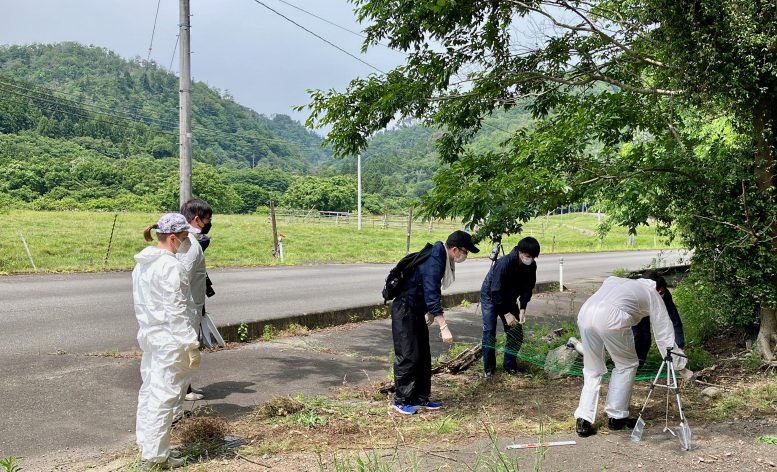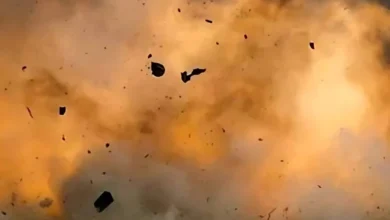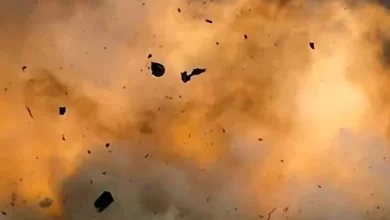Scientists Conduct First-Ever Imaging of Radioactive Cesium


Thirteen years after the Fukushima Daiichi nuclear disaster, researchers have achieved a world first by directly imaging radioactive cesium atoms in environmental samples, offering new insights into ongoing environmental and radioactive waste management challenges. This groundbreaking study, involving a multinational team and published in the Journal of Hazardous Materials, enhances understanding of cesium distribution and informs strategies for reactor decommissioning and waste management.
A new study has directly imaged radioactive cesium atoms in environmental samples from Fukushima, providing crucial data for nuclear waste management and environmental recovery efforts.
Thirteen years following the nuclear disaster at Fukushima Daiichi Nuclear Power Plant (FDNPP), researchers have achieved a groundbreaking feat: for the first time, they have successfully conducted direct imaging of radioactive cesium (Cs) atoms in environmental samples.
The groundbreaking analysis, completed by a team of researchers in Japan, Finland, America, and France, analyzing materials emitted from the damaged FDNPP reactors, reveals important insights into the lingering environmental and radioactive waste management challenges faced in Japan. The study was recently published in the Journal of Hazardous Materials.
The Fukushima Daiichi Meltdowns: A Continuing Engineering and Environmental Puzzle
In 2011, after the Great Tōhoku Earthquake and Tsunami, 3 nuclear reactors at the FDNPP underwent meltdowns due to a loss of backup power and cooling. Since then, extensive research efforts have focused on understanding the properties of fuel debris (the mixture of melted nuclear fuels and structural materials), found within the damaged reactors. That debris must be carefully removed and disposed of.
However, many uncertainties remain concerning the physical and chemical state of the fuel debris and this greatly complicates retrieval efforts.
Attempts to Understand the Chemistry of Radioactive Cesium Results in a World-First
A significant amount of radioactive Cs was released from the damaged Fukushima Daiichi reactors in particulate form. The particles, termed Cs-rich microparticles (CsMPs), are poorly soluble, small (< 5 µm) and have a glass-like composition.
Prof. Satoshi Utsunomiya from Kyushu University, Japan, led the current study. He explained that the CsMPs “formed in the bottom of the damaged reactors during the meltdowns, when molten nuclear fuel impacted concrete.” After formation, many CsMPs were lost from the reactor containment into the surrounding environment.

Figure 1. (Left) A structure model of pollucite and a simulated HAADF-STEM image using MacTempas. (Right) A high resolution HAADF-STEM image of iron-rich pollucite in the CsMPs. The Cs atoms in the image appear as bright spots (circled in the image). Approximately half of the Cs atoms in the structure are radioactive. Radioactive Cs atoms have not been imaged before from environmental samples. Credit: Kanako Miyazaki et. al.
Detailed characterization of CsMPs has revealed important clues about the mechanisms and extent of the meltdowns. However, despite abundant Cs in the microparticles, direct atomic-scale imaging of radioactive Cs in the particles has proven impossible.
Prof. Gareth Law, a study collaborator from the University of Helsinki, explained that “this means we lack full information on the chemical form of Cs in the particles and fuel debris.”
Utsunomiya continued, “whilst Cs in the particles is present at reasonably high concentrations, it is often still too low for successful atomic scale imaging using advanced electron microscopy techniques. When Cs is found at a high enough concentration, we have found that the electron beam damages the sample, rendering resulting data useless”. However, in the team’s previous work using a state-of-the-art high-resolution high-angle annular dark-field scanning transmission electron microscope (HR-HAADF-STEM), they found inclusions of a mineral called pollucite (a zeolite) within CsMPs. Law explained that “In past analysis we showed that the iron-rich pollucite inclusions in the CsMPs contained >20 wt.% Cs. In nature, pollucite is generally aluminum-rich.
The pollucite in the CsMPs was clearly different to that in nature indicating it formed in the reactors.” Utsunomiya continued, “Because we knew that most of the Cs in CsMPs is fission derived, we thought that analysis of the pollucite could yield the first-ever direct images of radioactive Cs atoms”.
Zeolites can become amorphous when subjected to electron beam irradiation, but that damage is related to the composition of the zeolite, and the team found that some pollucite inclusions were stable in the electron beam.
Learning this and informed by modeling, the team set about pain-staking analysis that saw Utsunomiya, graduate student Kanako Miyazaki, and the team finally image radioactive Cs atoms.

Scientists collected samples of contaminated soil near the damaged Fukushima Daiichi reactors. Credit: Satoshi Utsunomiya
Utsunomiya explained: “It was incredibly exciting to see the beautiful pattern of Cs atoms in the pollucite structure, where about half of the atoms in the image correspond to radioactive Cs.”
He continued: “This is the first time humans have directly imaged radioactive Cs atoms in an environmental sample. Finding concentrations of radioactive Cs high enough in environmental samples that would permit direct imaging is unusual and presents safety issues. Whilst it was exciting to make a scientific world first image, at the same time it’s sad that this was only possible due to a nuclear accident.”
More than an Imaging Breakthrough
Utsunomiya emphasized that the study’s findings are broader than mere imaging of radioactive Cs atoms: “Our work sheds light on pollucite formation and the likely heterogeneity of Cs distribution within the FDNPP reactors and the environment.”
Law further underscored relevance: “We unequivocally demonstrate a new Cs occurrence associated with the materials emitted from the FDNPP reactors. Finding Cs containing pollucite in CsMPs likely means it also remains in the damaged reactors; as such, its properties can now be considered in reactor decommissioning and waste management strategies.”
Collaborator Emeritus Prof. Bernd Grambow from Subatech, IMT Atlantique Nantes University, added that: “We should now also begin to consider the environmental behavior of Cs-pollucite and its possible impacts. It likely behaves differently to other forms of Cs fallout documented thus far. Also, the effect on human health might have to be considered. The chemical reactivity of pollucite in the environment and in body fluids is certainly different than that of other forms of deposited radioactive Cs”. Finally reflecting on the study’s significance, Prof. Rod Ewing from Stanford University underscored the pressing need for continued research to inform debris removal strategies and environmental remediation: “Yet again, we see that the pain-staking analytical efforts of international scientists really can unlock the mysteries of nuclear accidents, aiding long-term recovery efforts.”
Reference: ““Invisible” radioactive cesium atoms revealed: Pollucite inclusion in cesium-rich microparticles (CsMPs) from the Fukushima Daiichi Nuclear Power Plant” by Kanako Miyazaki, Masato Takehara, Kenta Minomo, Kenji Horie, Mami Takehara, Shinya Yamasaki, Takumi Saito, Toshihiko Ohnuki, Masahide Takano, Hiroyuki Shiotsu, Hajime Iwata, Gianni F. Vettese, Mirkka P. Sarparanta, Gareth T.W. Law, Bernd Grambow, Rodney C. Ewing and Satoshi Utsunomiya, 21 March 2024, Journal of Hazardous Materials.
DOI: 10.1016/j.jhazmat.2024.134104
The work was supported by bilateral funding from the Japan Society for the Promotion of Science and the Research Council of Finland.



